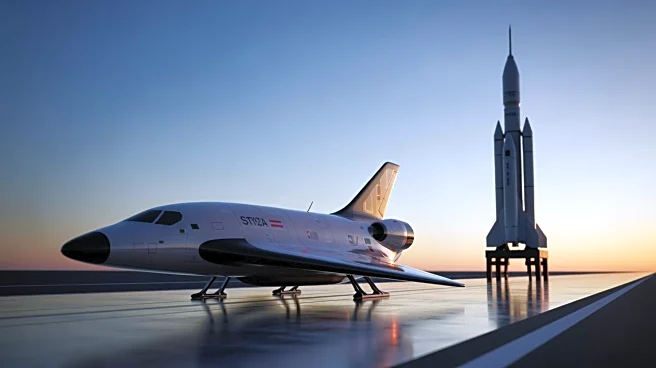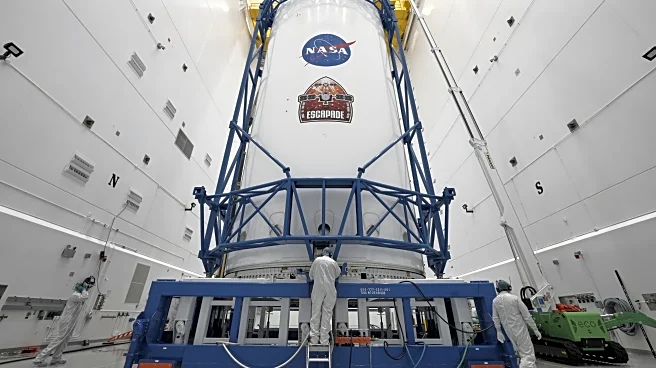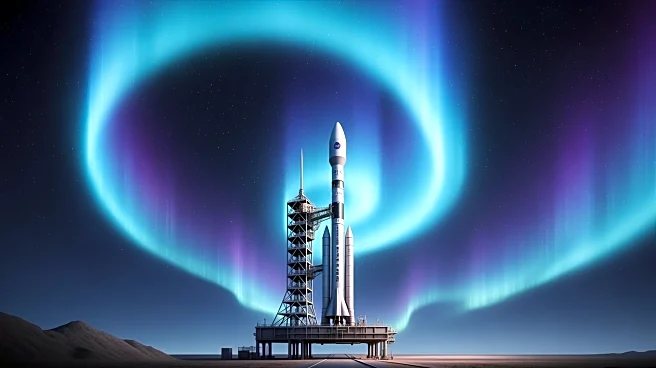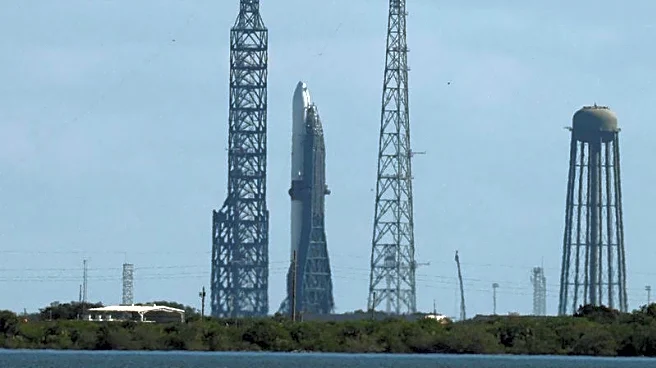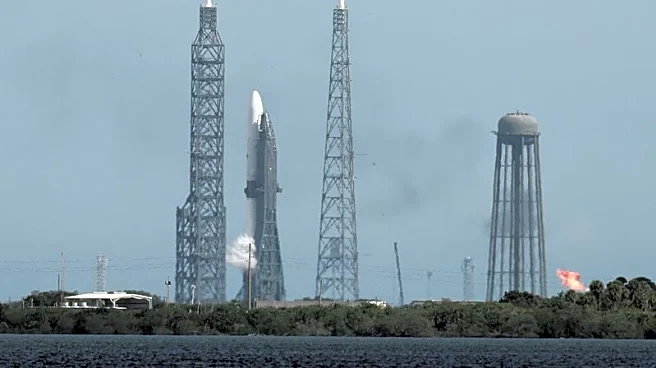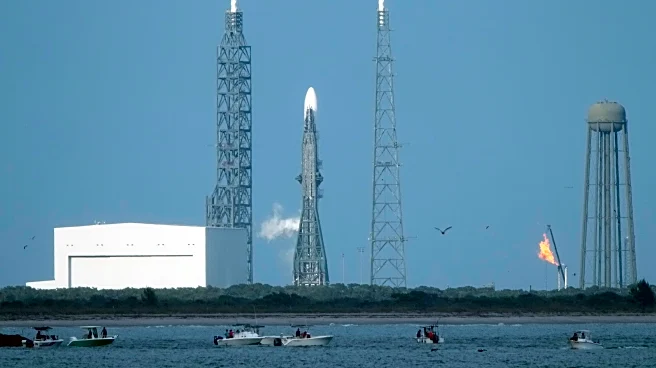What's Happening?
NASA has successfully launched its ESCAPADE mission, consisting of twin spacecraft, to Mars. The launch took place at 3:55 p.m. EST on November 13, 2025, from Launch Complex 36 at Cape Canaveral Space
Force Station in Florida. The spacecraft were carried aboard a Blue Origin New Glenn rocket. Following the launch, the rocket underwent a series of events, including stage separation and the deployment of the ESCAPADE spacecraft into a medium Earth orbit. This mission aims to study the Martian atmosphere and its interaction with solar wind.
Why It's Important?
The ESCAPADE mission represents a significant step in NASA's ongoing exploration of Mars, providing valuable data on the planet's atmosphere and its dynamics. This information is crucial for understanding Mars' climate and potential habitability, which could inform future manned missions to the planet. The collaboration with Blue Origin also highlights the growing role of private companies in space exploration, potentially reducing costs and increasing the frequency of missions. The success of this mission could pave the way for more public-private partnerships in space exploration.
What's Next?
The ESCAPADE spacecraft will continue their journey to Mars, where they will conduct scientific observations and experiments. The data collected will be analyzed to enhance our understanding of the Martian environment. NASA and its partners will monitor the mission's progress and make adjustments as necessary to ensure the success of the scientific objectives. The results of this mission could influence future Mars exploration strategies and the development of technologies for long-duration space travel.
